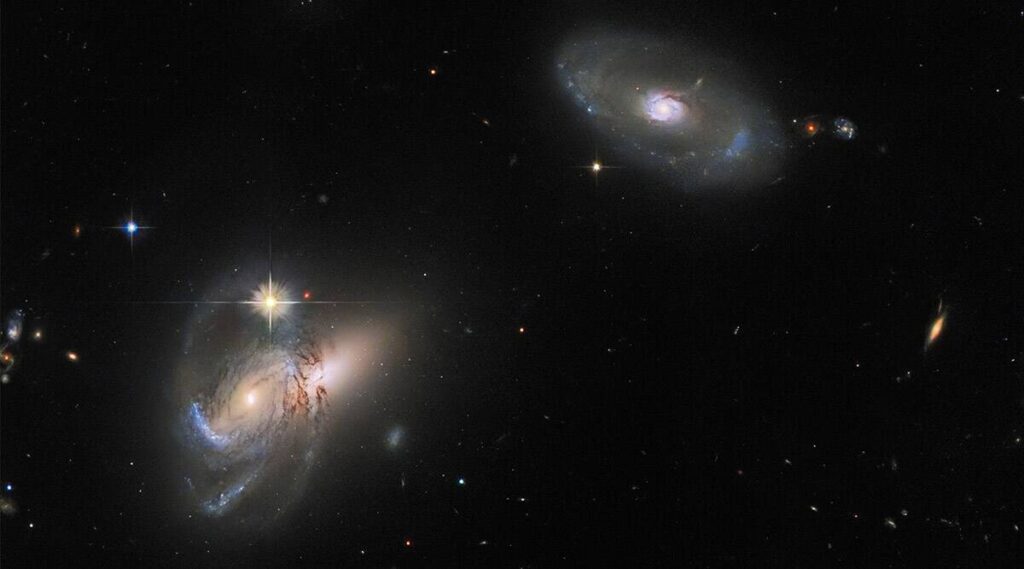Hubble Space Telescope Nasa has captured this picture that displays many galaxies. The single galaxy in the upper right is the Leda 58109. In the picture, accompanied by two other galaxy objects on the lower left. One of them is an active galaxy nucleus called SDSS J162558.14+435746.4, which partly obscures the SDSS J162557.25+435743.5 galaxy which is partly seen on the right behind the active galaxy nucleus.
Galaxy is often classified into two categories: Spiral and ellipse. But only the diversity in this hubble image displays how there is a far more complex galaxy classification network. This includes galaxies that have a very radiant active galaxy core in it.
The galaxy in the picture also describes various names owned by this star system. For example, some are relatively short like the 58109 Leda while others have a longer name that may be a little challenging to remember like other galaxies in the picture. This happens because of a different catalog system that maps and identifies different galaxies in our sky.
But there is no catalog that can be considered broad and sometimes includes overlapping areas in the sky. This means that the same galaxy can be owned by different catalogs and therefore can have different names. An example is Leda 58109, which is the name in the Galaxy Leda database, but also known as MCG+07-34-030 in the MCG Galaxy Catalog and SDSS J162551.50+435747.5 in the SDSS Catalog. The SDSS Catalog also included two galaxies to the right.
Leda, which stands for Lyon-Meudon Extragalactic Database (Leda) is the galaxy database that was first created in 1983 at Lyon Observatory. MCG is an abbreviation of morphological galaxies galaxy (or morphologiceskijijij Galactic catalog in Russian). Russia is published in five parts between 1962 and 1974. SDSS is an abbreviation of Sloan Digital Sky Survey and is a catalog made using multi-spectral imaging and the red shift data spectroscopy from a special 2.5 meter wide-angled optical telescope.







More Stories
NASA posts beautiful martian image showing ‘blue’ region of the red planet
NASA posts beautiful martian image showing ‘blue’ region of the red planet
Using diamonds as probes to explore fast-changing weak magnetic fields